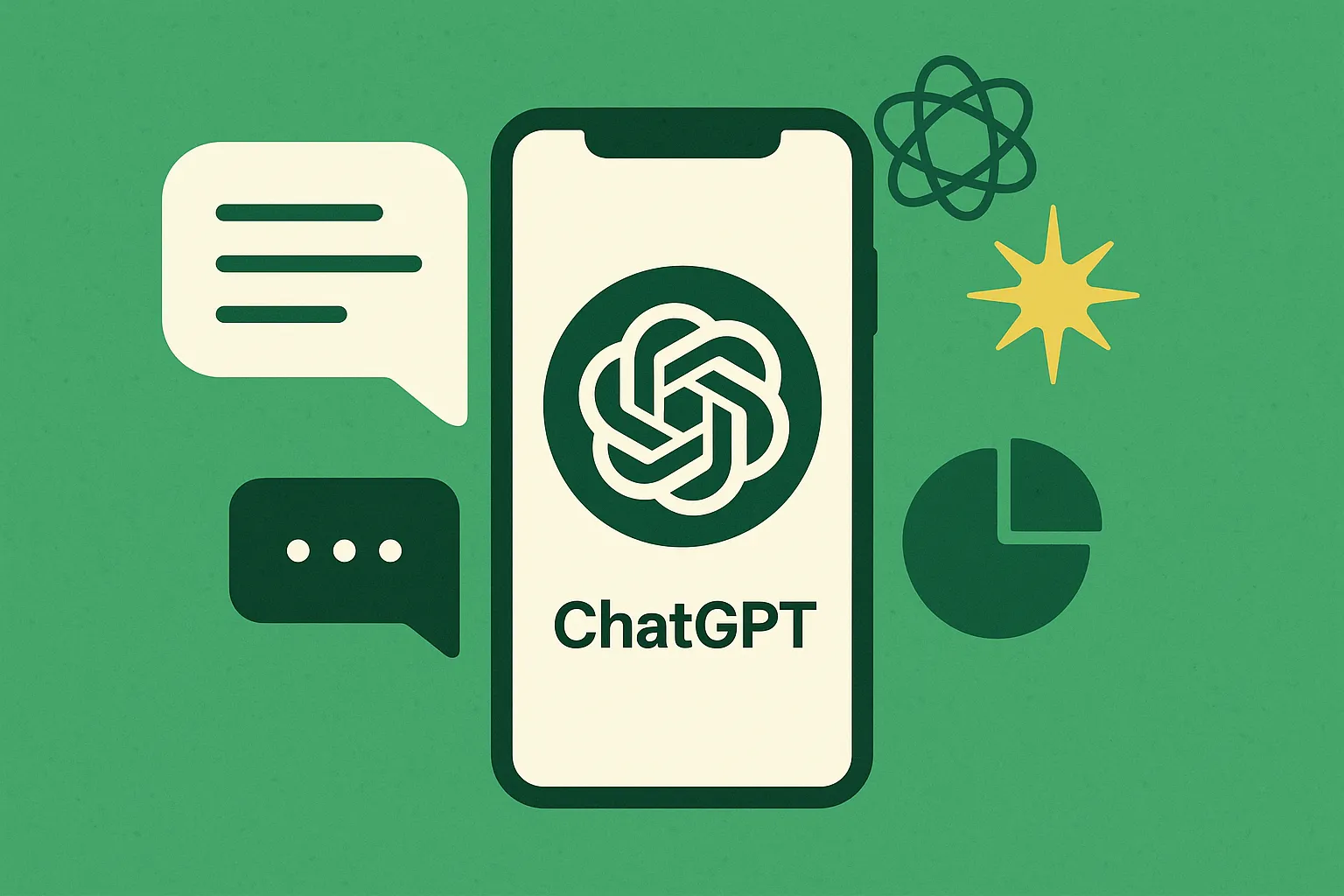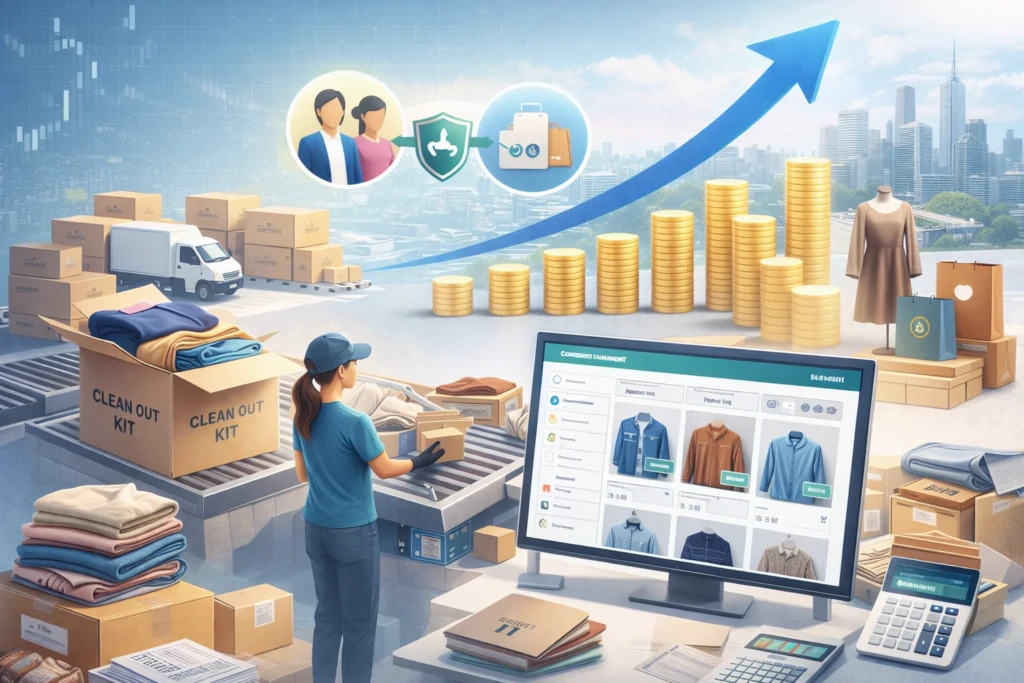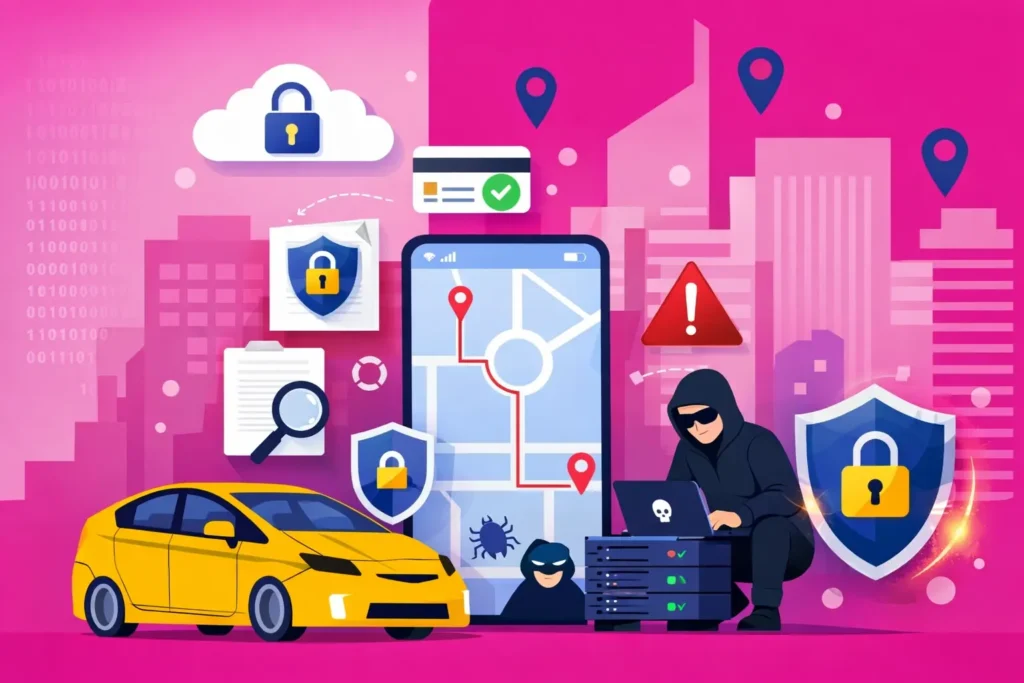Business model of ChatGPT has rapidly become a household name in the world of artificial intelligence. Developed by OpenAI, it’s a conversational AI model that can write essays, answer questions, generate code, and even simulate personalities.
Its business model of ChatGPT worth studying because ChatGPT demonstrates how advanced AI can be packaged into scalable SaaS products, API services, and enterprise solutions—while also creating an ecosystem of plugins, custom integrations, and premium subscriptions.
Understanding how ChatGPT generates revenue can inspire founders looking to build their own AI-powered platforms or conversational apps
What is ChatGPT & How It Works
What Problem Does ChatGPT Solve?
ChatGPT solves the problem of automating natural language understanding and generation. Before tools like ChatGPT, creating human-like conversation required complex rule-based systems that were rigid and expensive to maintain. ChatGPT provides:
- Fast, context-aware text generation
- Scalable customer support and content creation
- A way for businesses to integrate AI without building models from scratch
Who Uses ChatGPT?
Its users span a wide range of segments:
- Individuals using the free version for learning, productivity, and fun
- Professionals who subscribe to premium plans for advanced capabilities
- Developers and startups embedding Business Model of ChatGPT into their own apps via APIs
- Large enterprises using enterprise-grade solutions and custom integrations
How Does the App work Operate?
ChatGPT is delivered through multiple channels:
- Web App & Mobile App: The standard ChatGPT interface for direct conversation
- API Access: Businesses pay to integrate ChatGPT capabilities into their products
- Custom Solutions: Enterprise customers get dedicated infrastructure, enhanced security, and support
- Plugins & Tools: Extend functionality with third-party or proprietary plugins
The model itself is continuously trained on vast datasets, and usage is metered to balance costs and performance.
Read More : What is ChatGPT App and How Does It Work?
Target Audience Benefiting From ChatGPT
ChatGPT serves multiple customer segments, each with distinct needs and usage patterns:
- Casual Users
Individuals exploring AI for everyday tasks like drafting emails, summarizing articles, or brainstorming ideas. These users typically use the free version or occasional paid upgrades. - Knowledge Workers & Professionals
Writers, marketers, researchers, and consultants who rely on Business Model of ChatGPT Plus (premium tier) for higher-speed access, advanced models (like GPT-4), and priority availability. - Developers & Startups
Companies and independent developers who build apps, chatbots, and tools powered by the ChatGPT API. They pay based on usage volume and model complexity. - Large Enterprises
Corporations integrating ChatGPT into workflows for customer support, internal knowledge bases, and productivity tools. They purchase enterprise licenses and custom deployments with enhanced security. - Educational Institutions
Schools and universities using ChatGPT for tutoring, content creation, and accessibility solutions.
This diverse audience underpins a multi-layered business model that balances consumer adoption with enterprise monetization.
Features That Support the Business Model
Here are the core features that make ChatGPT profitable and scalable:
Conversational AI
The foundation of ChatGPT—generating natural, coherent text responses that feel human-like. This capability powers both free and premium experiences. It reduces the need for human support in many workflows, cutting costs for businesses.ChatGPT’s conversational intelligence is also what attracts millions of individual users to try it.
Multiple Model Tiers (GPT-3.5, GPT-4, etc.)
Offering different models allows tiered pricing. More advanced models are accessible via subscription or higher API rates.This strategy creates clear upgrade paths and incentivizes premium plans.It also helps serve a diverse range of customers, from casual users to enterprises.
API Access & Usage-Based Billing
Developers pay per token or per request when embedding ChatGPT into apps. This creates a predictable, usage-driven revenue stream. APIs make ChatGPT an invisible engine behind countless third-party products. They allow startups to build AI-powered solutions without maintaining their own infrastructure.
ChatGPT Plus Subscription
A monthly subscription for individual users to access faster response times, priority access, and GPT-4.Subscriptions generate recurring revenue and improve customer lifetime value.
This tier is especially popular among professionals who rely on ChatGPT daily.
Custom Instructions & Memory
Features that let users personalize behavior and save context over time, increasing stickiness and perceived value. Custom instructions allow users to define tone, style, and preferences. Memory features create more contextual, tailored experiences that feel unique to each user.
Enterprise-Grade Security & Admin Controls
For large organizations, robust security, compliance features, and admin dashboards make ChatGPT an enterprise-ready solution.This helps enterprises trust ChatGPT with sensitive data and regulated workflows.It also enables centralized management of teams and usage analytics.
Plugin & Extension Ecosystem
Users can enable plugins that connect ChatGPT to external tools like browsing, code interpreters, and company knowledge bases—adding more reasons to upgrade.Plugins expand ChatGPT’s capabilities far beyond text generation.They create new monetization channels while boosting engagement and retention.
Read More : Best ChatGPT Clone Scripts in 2025: Features & Pricing Compared
Revenue Streams of ChatGPT
Below is a detailed look at how ChatGPT generates revenue across customer segments and channels:
| Revenue Stream | How It Works |
| ChatGPT Plus Subscriptions | Monthly fees from individual users for premium access to GPT-4, faster response times, and priority usage. |
| API Usage Billing | Pay-as-you-go charges to developers and businesses based on tokens processed through the API. |
| Enterprise Licensing & Custom Deployments | Contracts with large companies for secure, dedicated infrastructure, SLA guarantees, and compliance support. |
| Plugin Marketplace & Integrations | Revenue share or additional fees when users enable premium plugins and integrations. |
| Professional Services | Custom onboarding, training, and integration support for enterprise clients. |
Details of Each Revenue Stream:
- ChatGPT Plus Subscriptions
- $20/month per user (pricing as of 2024)
- Accessible via web and mobile apps
- Unlocks GPT-4 and priority features
- $20/month per user (pricing as of 2024)
- API Usage Billing
- Billed per token (smallest text unit)
- Scales with usage, making it appealing to startups and large platforms alike
- Billed per token (smallest text unit)
- Enterprise Licensing
- Annual contracts negotiated based on seats, usage, and support needs
- Includes enhanced security, SSO, and compliance
- Annual contracts negotiated based on seats, usage, and support needs
- Plugin Marketplace
- Potential revenue-sharing with third-party plugin providers
- Adds incremental revenue streams as users adopt integrations
- Potential revenue-sharing with third-party plugin providers
- Professional Services
- Custom AI workflows
- Integration into CRM, knowledge bases, and other enterprise tools
- Custom AI workflows
Cost Structure and Its Budget
Running ChatGPT at scale involves substantial expenses. Here are the major cost drivers:
- Compute & Infrastructure
- Operating large language models requires massive GPU clusters.
- Cloud infrastructure costs grow as user adoption scales.
- Operating large language models requires massive GPU clusters.
- Ongoing Model Training & Improvement
- Continuous research, dataset curation, and fine-tuning of models.
- Development of new versions like GPT-4 and future iterations.
- Continuous research, dataset curation, and fine-tuning of models.
- Customer Support & Moderation
- Human teams ensuring content safety and responding to user issues.
- Content moderation systems to prevent misuse.
- Human teams ensuring content safety and responding to user issues.
- Compliance & Security
- Investments in data privacy, SOC 2 compliance, and enterprise security standards.
- Legal costs related to AI ethics and regulations.
- Investments in data privacy, SOC 2 compliance, and enterprise security standards.
- Sales & Marketing
- Customer acquisition for API clients and enterprise contracts.
- Developer relations and educational content to drive adoption.
- Customer acquisition for API clients and enterprise contracts.
- Platform Maintenance
- Ongoing updates to web and mobile apps.
- Scaling infrastructure to handle peak loads.
- Ongoing updates to web and mobile apps.
These costs are why premium subscriptions, API billing, and enterprise contracts are critical to sustain and grow ChatGPT’s business model.
Read more : How to Build an App Like ChatGPT: Developer Guide
2024–2025 Innovations or Updates
ChatGPT continues to evolve rapidly. Here are some of the most impactful recent updates shaping its business model:
- Custom GPTs
- Users can now create personalized GPT models with specific instructions and behaviors.
- This feature has driven more subscription upgrades and deeper engagement.
- Users can now create personalized GPT models with specific instructions and behaviors.
- Memory & Persistent Context
- ChatGPT can remember user preferences, past interactions, and project context.
- Increases stickiness and differentiates premium tiers from the free plan.
- ChatGPT can remember user preferences, past interactions, and project context.
- Advanced Data Analysis Tools
- Pro users and enterprises get tools for code interpretation, chart generation, and file analysis.
- These capabilities strengthen the value proposition for professionals and teams.
- Pro users and enterprises get tools for code interpretation, chart generation, and file analysis.
- Team and Enterprise Plans
- Expanded offerings for organizations, including collaboration tools, shared billing, and compliance controls.
- Reinforces the enterprise revenue stream and provides upsell opportunities.
- Expanded offerings for organizations, including collaboration tools, shared billing, and compliance controls.
- Plugin Ecosystem Growth
- More integrations with tools like Zapier, Google Drive, and proprietary enterprise systems.
- Encourages businesses to adopt ChatGPT as a central productivity hub.
- More integrations with tools like Zapier, Google Drive, and proprietary enterprise systems.
- Mobile Experience Enhancements
- Improvements to iOS and Android apps, driving higher retention among casual users.
- Improvements to iOS and Android apps, driving higher retention among casual users.
These innovations show how ChatGPT is expanding beyond a simple chatbot into a full-featured AI platform with diverse monetization levers.
Takeaways for Startup Founders
If you’re thinking about building an AI-powered platform like ChatGPT, here are a few insights to guide your strategy:
- Multiple Revenue Streams are Essential
Don’t rely on just one monetization path. ChatGPT combines subscriptions, API billing, enterprise contracts, and an ecosystem of add-ons. This approach diversifies income and smooths out fluctuations in demand. - Invest in Personalization
Features like memory, custom instructions, and plugin integrations help create stickier user experiences. When users can tailor the AI to their needs, they’re more likely to pay and stay. - Prioritize Scalability Early
From day one, design infrastructure and pricing to handle growth. ChatGPT’s success hinges on its ability to serve millions of users without degrading performance. - Focus on Trust and Safety
Content moderation, data security, and transparent policies are critical for winning enterprise customers and maintaining compliance. - Embrace Continuous Improvement
Frequent updates and new capabilities keep the product ahead of competitors and justify premium pricing.
Read more : Reasons startup choose our chatgpt clone over custom development
Why Work with Miracuves?
Miracuves specializes in helping founders build ready-made AI apps, SaaS platforms, and clones of proven products. Whether you want to launch an AI chatbot, integrate language models into your app, or create a custom subscription platform, we provide:
- Pre-built solutions you can customize
- Enterprise-grade infrastructure and security
- Fast go-to-market timelines
- Dedicated support and guidance
Explore our ChatGPT Clone Development Services or browse other AI-powered solutions at Miracuves.com.
According to Gartner’s insights on AI business models, companies that combine subscription revenue with enterprise licensing and API services are seeing the strongest long-term growth in the AI sector.
Conclusion :
ChatGPT is more than a viral AI tool—it’s a masterclass in designing a modern SaaS business model. From tiered subscriptions and API monetization to enterprise licensing and an expanding plugin ecosystem, every element is crafted to drive sustainable revenue and long-term user engagement.
If you’re a startup founder inspired by ChatGPT’s success, now is the perfect time to build your own AI platform. At Miracuves, we make it easy to launch an AI-powered app or SaaS solution with proven features, robust infrastructure, and full customization.
Ready to create your ChatGPT alternative?
Contact our team or explore our ChatGPT Clone Solutions to see how we can help you turn your vision into a profitable business.
FAQs:
1. How does ChatGPT make money?
ChatGPT earns revenue through several channels: individual subscriptions (ChatGPT Plus), API usage fees charged to developers, enterprise contracts with large organizations, and premium add-ons like plugins. This multi-tiered approach ensures both consumer and business customers contribute to sustainable income.
2. What is the difference between ChatGPT free and Plus?
The free version provides access to GPT-3.5, while ChatGPT Plus (around $20/month) gives users faster response times, priority access, and the more advanced GPT-4 model. Professionals and heavy users often choose Plus for higher performance
3. Can startups build something similar to ChatGPT?
Yes—thanks to advances in open-source models and APIs, startups can create conversational AI platforms tailored to niche markets or specific workflows. Working with a development partner like Miracuves can accelerate your launch and help you avoid common pitfalls.
4. Is ChatGPT safe for enterprise use?
ChatGPT offers enterprise-grade security, including data encryption, compliance standards, and admin controls. However, companies should implement usage policies and review integrations to maintain data privacy and trust.
5. What are the most important features to include in a ChatGPT clone?
Core features should include conversational AI capabilities, user management, subscription billing, API access, and customization options like memory or plugins. These are the pillars of ChatGPT’s success and monetization.
Related Articles :








